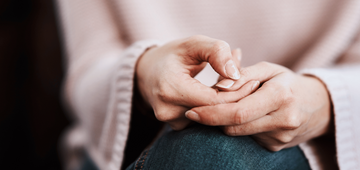
Third out in our four-part blog series on special procedures and infection control is Charlotte Rose, Senior Environmental Health Officer at City of Wolverhampton Council, highlighting the dangers of the industry focus on aesthetics rather than good infection prevention practice.
Public perception on how you should look or fit into society is forever changing. Public demand for treatments on the High Street is increasing and treatments are holding more levels of risk to both the consumer and technician.
The behaviours seen with regards to infection prevention in the beauty and aesthetics industry is somewhat daunting for regulators. Infection prevention and control is by no means the focus point of learning, nor what we see in practice. Instead, the ideas behind the world of beauty are focused entirely on customer satisfaction, to modify the body to look how consumers see fit. There seems to be a lack of attention for the risks associated with certain procedures, its entire focus is about making the client look good, rather than the focus being on one of the most important aspect of the job, infection prevention and control. Without that as the main focus, the uncontrolled threats to health will remain.
Over more recent years, Environmental Health Officers (EHO's) like myself have noticed a trend of premises lacking basics such as having access to suitable hand washing facilities, Personal Protective Equipment (PPE) including gloves, face masks and suitable clothing, cleaning chemicals, and sharps management. Simple hand washing techniques play a key part in everyday practice, but yet we note it being an issue in the majority of cases.
EHOs have seen an increase in technicians receiving little or no training, many are self-taught. These technicians do not realise that, through poor or limited methods of safe practice, they are putting themselves and loved ones at home at risk, as well as their customers. The best approach, which the good technicians that are out there follow, is to always think: ‘In practice, you prepare and treat everyone as though they are infected, without them even knowing. It’s the safest way to protect yourself and the client.’
A way of tackling poor safety practices is to educate at the earliest stage of study, ensuring that training providers teach the most important aspects of procedures, where safety comes first. What EHOs have found is that enforcement has to be a staged approach, providing education is what matters, via events, social media and engaging with the industry. Raising the profile of safety in the industry. Building relationships is key, we want to be approachable in a sense when it matters the most, for the public as well as the industry, and I’ve found that this works here in the Midlands.
As there is no formal requirement to be qualified to any degree within the beauty and aesthetics industry, competency is assessed through safe working practices, skills, knowledge, experience and facilities available on site. This process of self-learning is inadequate, with regulators and EHOs observing poor practices, knowledge, and a lack of supervision during the learning process. There is an identified need for a unifying set of qualifications for both invasive and non-invasive procedures, that are in place for non-medical treatments, delivered by reputable providers.
Unfortunately, the training providers that are currently out there at the moment are all pitching at different levels, the good ones are few and far between. A more secure way of moving forward is better regulation. Lobbying Government, with both industry and local authority support will help towards securing a more robust and safer industry. It will bring about more suitable options for enforcement, with a uniformed set of qualifications that are readily available, with accreditation, similar to the medical sector. We need providers with good business models, who want to drive the right behaviour, and those who have good strong ethics.



